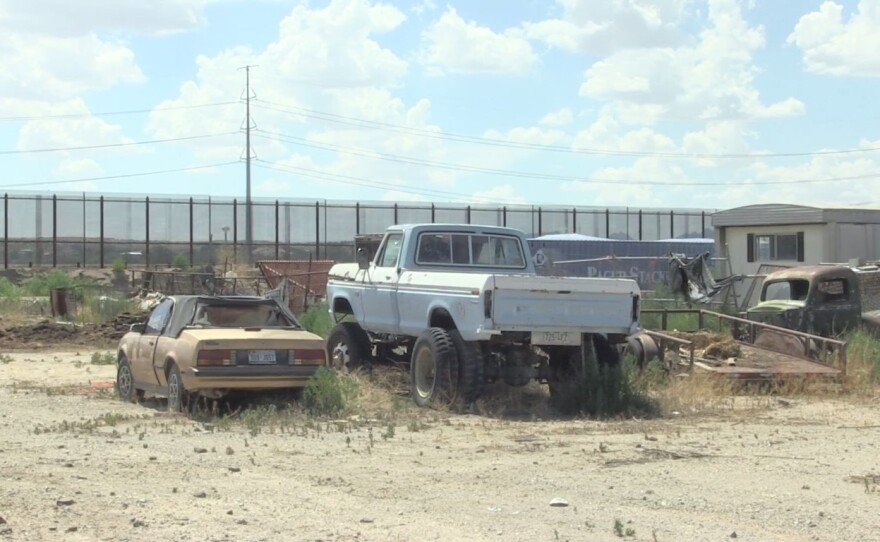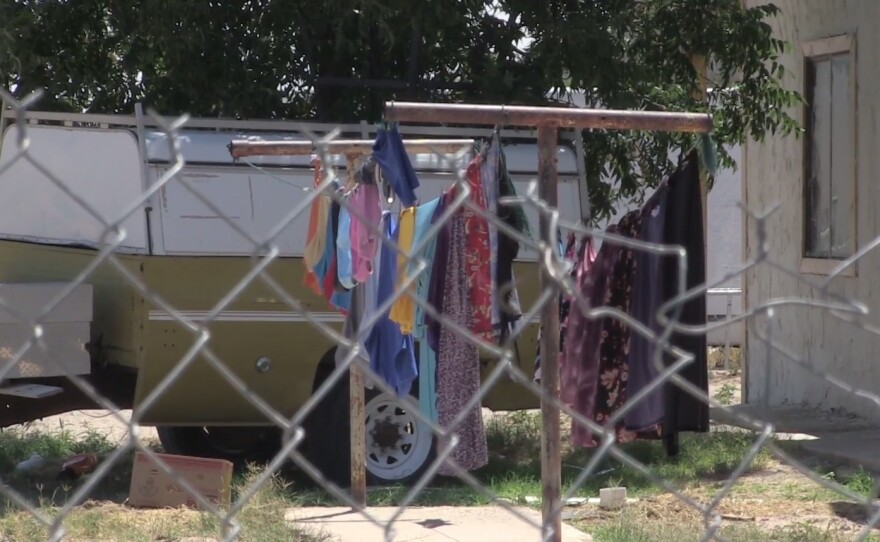Global warming looms large in the Southwest as rising temperatures threaten to diminish already scarce water supplies. A 2014 United Nations report suggests that globally, the burden of climate change will impact the poor the most. Some of the most marginalized communities in the United States are found along the U.S.-Mexico border.
Some people living along the border already live without access to running water. In New Mexico, 90 percent of the population gets their drinking water from the ground — fed by melting snow packs from mountains, rivers and streams. But with rising temperatures and warmer and shorter snow seasons, less of that water is making it into the aquifer.
To keep up with plummeting water levels, municipal and private wells are being drilled deeper into the earth. But for people living in low-income communities along the border known as colonias, that is not a viable option.
Many residents depend on shallow wells dug by hand.
“People here, they know how to do it, so they do it by hand,” said Maria Covernali, a colonias resident living near El Paso, Texas.
Covernali said when she finally struck water 25 feet below her home, her family could not drink it because it was not safe. Instead, they used it to shower and do their laundry, until they realized that was a problem too.
“The clothes was like turning yellow…and rotten.” Covernali said.
A 2015 University of Texas Health Impact study reported high concentrations of arsenic and nitrates in the water supply of many colonias. They also found higher than normal rates of water-borne diseases among residents, many reporting cases of diarrhea, dysentery and skin lesions.
“We use to take a shower with that water too, but the skin was with a lot of rashes. I have scars from that,” Corvernali said. “That's what a doctor told me, 'Well, you are going that have that all your life, just because of the water.' And I said ‘Oh my God!’"
Municipal water systems can deal with these impurities. Covernali said many residents bought land from developers with assurances that it would eventually be piped into nearby water systems.
"The developers take advantage of the people," Corvenali said. “After we start living on the land, we start to see the problems that we face.”
A lot of the people living in colonias haul their water in tanks or buy bottled water.
Some scientists are concerned climate change is going to leave more people without access to running water. William Hargrove is director of the Center for Environmental Resource Management at the University of Texas, El Paso.
“They are very vulnerable in terms of climate change,” Hargrove said. “During very hot and dry times maybe the water table drops. It could drop below their intake and they could be without water for a time period during the hottest time of the summer.”
Hargrove said most colonias are in rural areas, surrounded by irrigated agriculture.
“Farmers are also pumping water to apply to their crops and it makes people who have a domestic well vulnerable,” Hargrove said.
Pecans, alfalfa and cotton are all thirsty crops grown in Chamberino, New Mexico. That is where Patrick Marquez lives with his family. Marquez said his well runs dry for a couple weeks every year while the farmers are pumping water out of the aquifer.
“Thank god to my neighbors that I’ve been able to run a garden hose to give me water. So that at least my kids can take a shower and we can use the facilities,” Marquez said.
According to a 2009 Housing Assistance Council Community report, the Marquez and Covernali families are just some of the 1.5 million people living along the border who depend on vulnerable water supplies.

“I’m living here in the United States of America, so I'm suppose to have water.” Maria Corvernali said.
A few years ago Covernali decided to take matters into her own hands. She started Familias Trufinadoras, a non-profit advocacy group for the residents. She has had some success getting developers to follow through on agreements to pipe water into colonias. She has also secured Housing and Urban Development (HUD) grants to build water infrastructure.
“I have to do something for me, for my kids and for the community.” Corvenali said.
Patrick Marquez said he conserves water where he can, but it is for naught if farmers are not willing to plant more water-efficient crops.
Unlike the large-scale farmers, Marquez said he can not afford to keep digging deeper wells.
“It is falling on the average person, because we are the ones who are going to suffer,” he said. “More people need to be aware of the water situation, they need to conserve. I would have to think of the welfare of my children.”
A 2015 NASA climate study projects Southwest water supplies will only be diminished further with an even harsher drought projected in the next 30 years.
This story was produced by David Salinas and the PBS NewsHour Student Reporting Lab at Las Cruces High School, NM mentored by partner station KRWG. Support comes from the Corporation for Public Broadcasting and the National Science Foundation. For more information visit @reportinglabs or http://studentreportinglabs.org






